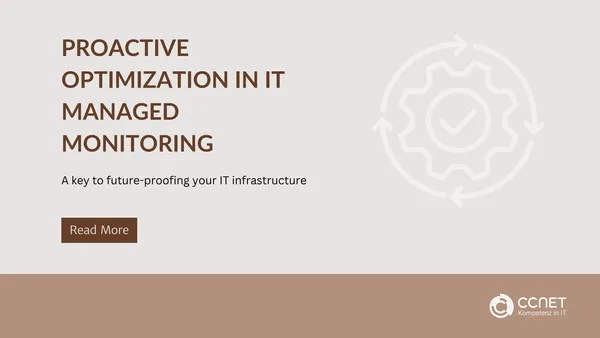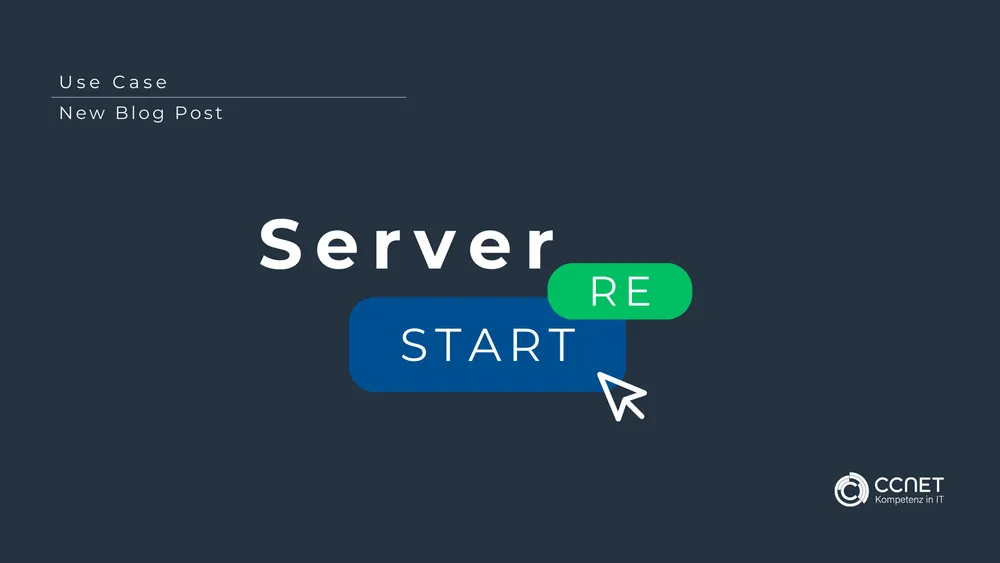
CCNet
Jun 24, 2024 • 2 min read

Proactive optimization in IT managed monitoring: A key to future-proofing your IT infrastructure
IT infrastructure reliability is more critical than ever. Companies are faced with the challenge of not only keeping their systems up and running, but also ensuring that they are efficient and state of the art. This is where proactive optimization as part of IT managed monitoring plays a crucial role.
The importance of proactivity
Traditionally, IT monitoring has been a reactive task: systems were monitored to make sure they were working and problems were fixed after they occurred. However, this approach often leads to downtime and potential data loss that could be avoided if problems were identified and fixed in advance. Proactive optimization in IT managed monitoring focuses on predicting and preventing problems before they can affect operations.
Strategies for proactive IT optimization
The basis for proactive IT optimization is comprehensive monitoring of all aspects of the IT infrastructure - from hardware and networks to applications and databases. By continuously analyzing performance data, IT teams can identify patterns that could indicate future problems. This data allows them to take preventative measures, such as:
- Regular updates and patches: To close security gaps and improve system performance.
- Capacity planning: By monitoring system usage, organizations can efficiently allocate resources and avoid bottlenecks.
- Automated scripts: To fix known issues without the need for human intervention.
Advantages of proactive optimization
Implementing a proactive approach to IT monitoring and maintenance offers numerous benefits. Among the most important are:
- Reduced downtime: By avoiding system downtime, business operations remain uninterrupted, resulting in increased productivity.
- Cost savings: Avoiding downtime and efficient use of IT resources can result in significant cost savings.
- Improved security: Proactive monitoring helps to detect security threats early and neutralize them before they can cause damage.
- More satisfied users: A reliable IT infrastructure improves the user experience for employees and customers alike.
Conclusion
Proactive optimization in IT managed monitoring is not a luxury, but a necessity for companies that want to remain competitive in the digital era. By predicting and preventing IT problems, companies can not only improve their efficiency and security, but also ensure smooth and uninterrupted operations. In partnership with an experienced IT managed services provider, companies can benefit from customized monitoring solutions tailored to their specific needs, effectively future-proofing their IT infrastructure.
Further information can be found here: IT Managed Services
FAQs on proactive optimization in IT management
What does proactive IT management monitoring mean?
It describes the continuous monitoring and optimization of IT systems with the aim of preventing disruptions before they occur—rather than just reacting to errors.
How does proactive monitoring differ from reactive monitoring?
Reactive monitoring only detects problems after they have occurred. Proactive monitoring identifies signs of failures or security risks at an early stage and prevents them through preventive measures.
What measures does proactive optimization include?
These include regular updates, patch management, capacity planning, automated scripts, and real-time analysis of performance data.
What are the benefits for companies?
Less downtime, lower IT costs, improved IT security, and an overall more stable and higher-performing system.
Why is proactive monitoring crucial for the future?
Because it enables companies to adapt their IT infrastructure to new requirements, minimize security risks, and ensure their long-term competitiveness.


